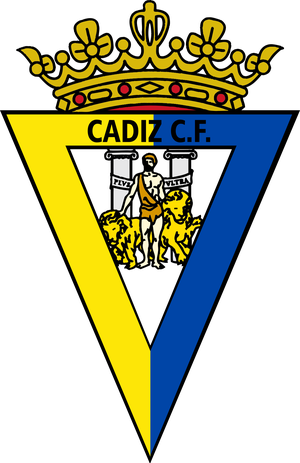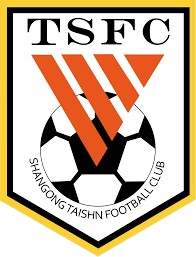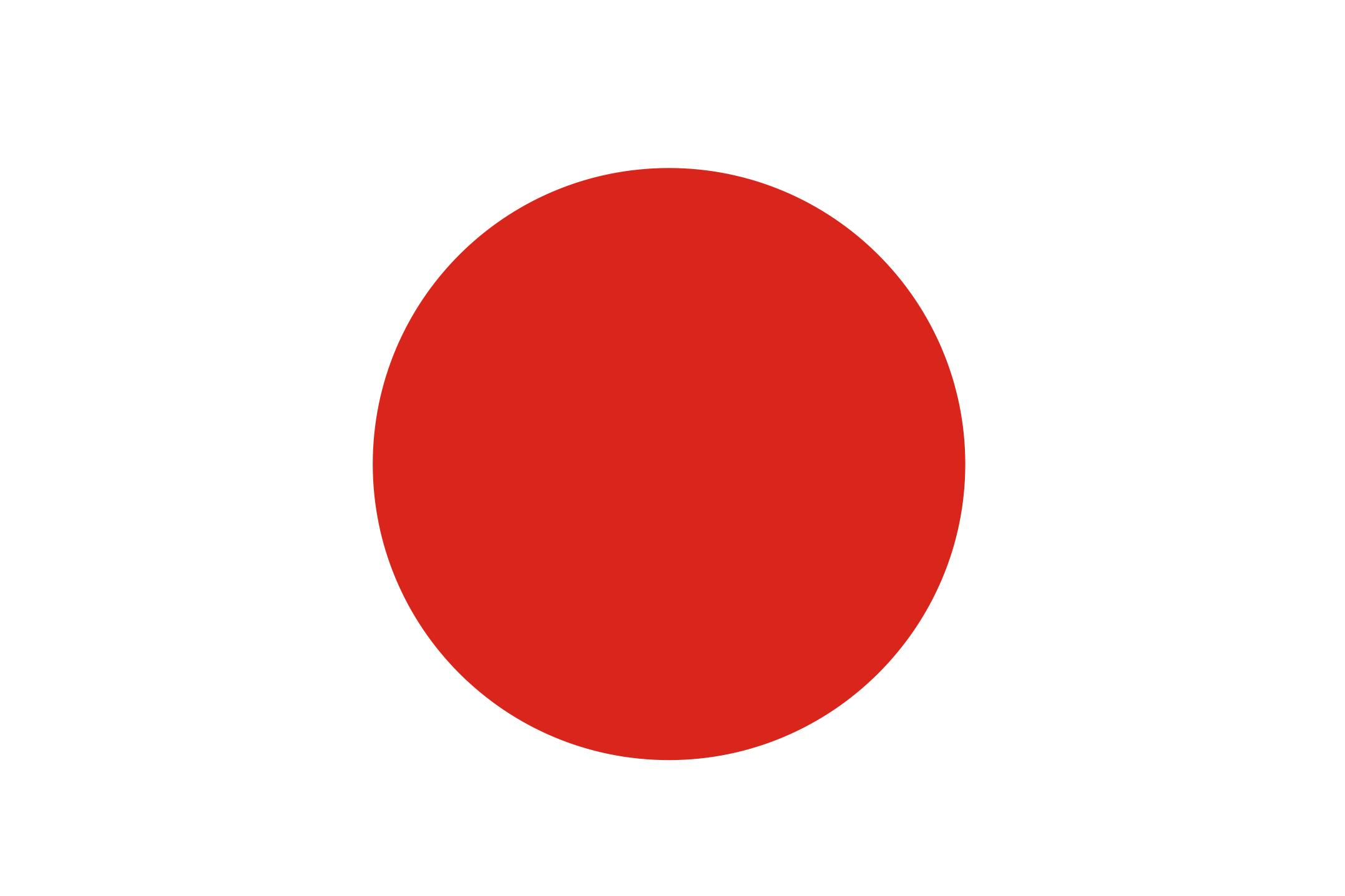

2月23日,指挥家、香港小交响乐团桂冠音乐总监叶咏诗(Yip Wing-sie)将首次携手天津茱莉亚管弦乐团举办音乐会。她将带领乐团演出埃马纽埃尔·夏布里埃拥有丰富色彩的管弦乐狂想曲《西班牙》、肖斯塔科维奇充满时代特征与思考的《e小调第十交响曲》,并与天津茱莉亚学院第四届研究生协奏曲比赛优胜者之一、2025届管弦乐表演专业巴松管学生祐川嵩雄(Takao Sukegawa)合作演绎罗西尼幽默而优雅的巴松管协奏曲《实验协奏曲》。
演出前,天津茱莉亚将继续举办“音乐会导赏”。当日14:00于陈江和剧场内,叶咏诗、祐川嵩雄将与天津茱莉亚管弦乐团驻团指挥林敬基(Ken Lam),以及演出项目制作经理职承一起带领大家深入了解本场演出的曲目策划与作品解读,音乐会购票观众可凭票入场。
天津茱莉亚管弦乐团音乐会
TIANJIN JUILLIARD ORCHESTRA CONCERT
叶咏诗,指挥
Yip Wing-sie, Conductor


演出曲目
PROGRAM
埃马纽埃尔·夏布里埃(1841-1894)
管弦乐狂想曲《西班牙》
EMMANUEL CHABRIER (1841-1894)
España, rapsodie pour orchestre
焦阿基诺·罗西尼(1792-1868)
巴松管协奏曲“实验协奏曲”
祐川嵩雄*,巴松管
GIOACHINO ROSSINI (1792-1868)
Concerto for Bassoon and Orchestra, "Concerto da Esperimento"
Takao Sukegawa*, Bassoon
中场休息
德米特里·肖斯塔科维奇(1906-1975)
e小调第十交响曲,作品93
DMITRI SHOSTAKOVICH (1906-1975)
Symphony No. 10 in E Minor, Op. 93
* 2024-25学年天津茱莉亚协奏曲比赛获胜者
* Winner of the 2024-25 Tianjin Juilliard Concerto Competition
本场演出曲目以现场演奏为准
The program is subject to change
埃马纽埃尔·夏布里埃
管弦乐狂想曲《西班牙》
EMMANUEL CHABRIER
España, rapsodie pour orchestre
若要将一种文化中最绚丽的风情,浓缩在一部仅六分多钟的音乐作品里,管弦乐狂想曲《西班牙》堪称经典中的经典。这部洋溢着民族舞蹈与音乐的交响狂欢,出自法国浪漫主义作曲家埃马纽埃尔·夏布里埃之手,是他在游历西班牙六个月之后灵感的结晶。夏布里埃曾风趣地称它为“只不过是一首F调的曲子而已”,但伟大的作曲家马勒,却将其誉为“现代音乐的开篇之作”。
夏布里埃自学成才,没受过专业音乐教育。他在巴黎担任公务员,工作之余便投身创作,还积极参与以研究瓦格纳为宗旨的音乐家俱乐部的活动。人们如今多因《西班牙》认识夏布里埃,但他实则是一位热诚的歌剧作曲家。他的喜歌剧《星星》如今仍是各大剧院常演的剧目,而《身不由己的国王》则影响了拉威尔的创作风格。他独特的和声色彩与配器,影响了德彪西、理查·施特劳斯、斯特拉文斯基和萨蒂等大师。
《西班牙》的灵感源于两种西班牙民间舞蹈——霍塔和马拉圭那,一个轻松明快,一个激情四射,但都深深扎根于西班牙的土地。开端,弦乐拨弦间,长笛点缀,圆号奏响了伊比利亚地平线上第一缕温暖的阳光。音乐肢体的姿态好似瓦伦西亚广场上舞女扬起的裙摆,小号随即演奏出第一主题。铃鼓如清脆的响板,整个乐队掀起了舞蹈的浪潮。乐曲中部穿插了作曲家深情的旋律,各乐器你来我往,交织呼应,乐曲最后在欢腾的沐浴下辉煌结束。
If one wanted to condense the most vibrant aspects of a culture into a piece of music lasting just over six minutes, Chabrier's orchestral rhapsody España would be a perfect exemplar. This symphonic celebration, brimming with national dances, was composed by the French Romantic composer Emmanuel Chabrier, inspired by his six-month journey through Spain. Chabrier humorously referred to it as "just a piece in F major," but Mahler praised it as "the first work of modern music!"
Chabrier was self-taught and did not receive formal music education. He worked as a civil servant in Paris and composed in his spare time while also participating in a club dedicated to the study of Wagner. While Chabrier is most recognized today for España, he was actually a passionate opera composer. His operetta The Stars is still frequently performed in major theaters, and The King in Spite of Himself influenced Ravel’s compositional style. His unique harmonic colorations and orchestration also influenced the likes of Debussy, Richard Strauss, Stravinsky, and Satie.
España draws inspiration from two Spanish folk dances — the jota and the malagueña — one light and lively, the other passionate, yet both deeply rooted in Spanish culture. The piece begins with plucked strings, punctuated by flutes, and the horns usher in the first rays of sunshine over the Iberian horizon. The music moves like the skirt of a dancer raised in the plazas of Valencia, with trumpets introducing the first theme, the entire orchestra surging with the rhythm of the dance. In the middle section, the composer’s ingratiating melody weaves through the instruments, which echo and respond to each other, culminating in a glorious and jubilant finale.
曲目介绍由职承撰写
Program note by Cheng Zhi
焦阿基诺·罗西尼
巴松管协奏曲“实验协奏曲”
GIOACHINO ROSSINI
Concerto for Bassoon and Orchestra, "Concerto da Esperimento"
法国作曲家夏布里埃是创作歌剧的行家,而在阿尔卑斯山另一端、同样在地中海怀抱中的意大利,有位传奇作曲家焦阿基诺·罗西尼。他曾将歌剧从历史的尘埃中拯救出来,他深知幽默艺术的精髓,谱写了如《塞维利亚理发师》这样的经典之作。
罗西尼一生创作了39部歌剧,在生命的最后10年,他投身于沙龙音乐的创作,还风趣地将这些作品称为“晚年的罪孽”。1842-1845年,处于创作低潮期的罗西尼在意大利博洛尼亚音乐学校任教。其间,为指导巴松管学生拿撒勒诺·加蒂完成期末考试,他创作了巴松管协奏曲。然而,由于缺乏确凿的记录,音乐学家们怀疑此曲实际上是加蒂的作品,罗西尼仅仅参与了起草工作。也许,身为美食家的罗西尼认为,生活中还有比创作更美好的事物。
巴松管属木管乐器,音色低沉温暖又清脆多变。演奏时,演奏者的气息经哨片和S管进入管体,靠按压管体前后按键改变音高。罗西尼的巴松管协奏曲是展现该乐器全面演奏技巧的经典之作,共分三个乐章。第一乐章为降B大调快板,管弦乐呈示部庄重又生机盎然。巴松管宛如由衷的讲述者奏响第一主题,引领乐队穿梭于不同调性,随后一段柔美悠长的旋律出现,进而转至展现精湛技巧的变奏部分。第二乐章是悲伤的c小调,这让很多听众意外,毕竟罗西尼是喜歌剧的大师,这忧郁的小调效果,让人想起“一切喜剧都有一个悲情内核”。第三乐章是F大调回旋曲,曲风轻松诙谐,将巴松管的华丽技巧与独特魅力展现得淋漓尽致。
Although Rossini wrote 39 operas, he retired young and, over the last decades of his life, turned to salon music, humorously calling these works "the sins of his old age." From 1842 to 1845, during a period of creative decline, Rossini taught at the Bologna Conservatory in Italy. During this time, to help guide the bassoon student Nazareno Gatti through his final exams, Rossini composed the Bassoon Concerto. However, due to a lack of clear documentation, musicologists have speculated that the concerto might have actually been Gatti’s work, with Rossini only involved in its drafting. Perhaps, being a food lover, Rossini felt there were more delightful things in life than composition.
The bassoon has a rich, warm tone that is both deep and articulate. Rossini's Bassoon Concerto, divided into three movements, showcases the instrument's full range of performance techniques. The first movement, an Allegro in B-flat major, is both dignified and lively, with the bassoon introducing the first theme. The orchestra moves through different tonalities, followed by a beautiful, extended melody that transitions into a variation section displaying exquisite playing techniques. The second movement, a melancholic affair in C minor, may surprise many listeners, as Rossini is known for his comic operas. This sorrowful minor key evokes the notion that "all comedies have a tragic core." The third movement, a lively Allegro in F major, is light-hearted and witty, showcasing the bassoon’s brilliant techniques and unique charm to the fullest.
曲目介绍由职承撰写
Program note by Cheng Zhi
德米特里·肖斯塔科维奇
e小调第十交响曲,作品93
DMITRI SHOSTAKOVICH
Symphony No. 10 in E Minor, Op. 93
纵观音乐史,很多作曲家将自己的名字写入作品。在他们看来,音乐绝非身外之物,更不是仅供人们赏玩的普通艺术品。然而,没有任何人可以像德米特里·肖斯塔科维奇那样,将命运与作品紧紧捆绑,在其音乐发展的轮廓中经历难以跨越的鸿沟与黑暗,抵达遥不可及的彼岸,最终在苦难中浴火重生。
在1953年首演的e小调第十交响曲中,肖斯塔科维奇采用了一种在他众多作品里反复出现的创作手法:构建了一个由音符D、降E、C、B组成的动机。在德国音乐记谱体系中,这组音符组合起来呈现为D-S-C-H,恰好与作曲家自己的名字“D.Schostakowitsch(德米特里·肖斯塔科维奇)”形成巧妙的音乐映射。
第十交响曲共四个乐章。第一乐章,大提琴与低音提琴开启黑暗中的探索,演奏由三个音组成的动机,这是贯穿全曲的基础乐思。规整的结构下暗流涌动,三个音延伸至第二乐章,演变成锋利、凶狠的谐谑曲。作曲家虽在此处标为快板,但他对速度实际的意图却是越快越好,甚至直至失控。木管和弦乐各自交织成旋风般的音群,一次次遭受铜管的猛烈冲击,而后又重新组合,并在军鼓疯狂的助推下,向伸手不见五指的黑暗横冲直撞。第三乐章,以肖斯塔科维奇名字组成的动机(D-S-C-H)出现,仿佛他本人正见证着疯狂过后的废墟,在三拍子的节奏下,跳起了绝望的舞蹈。第四乐章,低音的悲叹引入自由翱翔的单簧管,行至尾声,作曲家名字的动机着了魔般反复回响,刹那间,乐团幻化为E大调的“火鸟”,冲破了一切束缚。
Shostakovich’s Symphony No.10 in E minor, Op. 93 was premiered on December 17, 1953, by the Leningrad Philharmonic Orchestra, led by Yevgeny Mravinsky. This Symphony was the composer’s first major piece in the post-Stalin era of relative creative openness.
The first movement, Moderato, is by far the longest. The piece opens with a dark and solemn introduction, featuring a slowly unfolding melody in the lower strings. The movement is both expansive and deeply expressive. Tension gradually builds and is released in bursts of intensity, creating a sense of emotional unrest. The appearance of a woodwind instrument comes when the clarinet sings the second theme, while the third theme is given to the flute with pizzicato accompaniment in the strings. The development section is built upon the various themes introduced thus far, and the music remains dark and foreboding, avoiding any sense of resolution. Towards the end of the movement, the intensity slowly winds down and fragments of the main themes return, quieter and more restrained. The music fades away with the piccolo lingering into the silence.
The second movement is short, fast, and full of fearsome energy. The piece is filled with aggressive rhythms and bold orchestral timbres, giving it a sinister and violent character. From the first note, the music erupts with brutal force and aggression in the strings and the effect is enhanced by the brass and percussion which add further vehemence to the musical argument. While Solomon Volkov’s debunked Shostakovich memoir Testimony claims that the movement is a portrait of Stalin, its meaning remains open for interpretation. What is beyond doubt is that the music itself conveys a sense of urgency and terrifying force, making it one of the most intense scherzos among Shostakovich’s compositions.
The third movement Allegretto stands in place of the traditional slow movement, perhaps because the opening movement already contains so much slow music. This movement introduces Shostakovich’s celebrated musical monogram: D-Eb-C-B (D-S-C-H in German notation), "spelling" the composer’s initials in a tradition going back to Schumann and Bach. A second motive (announced by the French Horn) may be associated with Elmira Nazirova, a pianist and composer with whom Shostakovich had a personal relationship. Both the D-S-C-H motif and the Elmira motif (E-La-Mi-Re-A) can be heard throughout the movement unfolding in dialogue. While this movement resembles a waltz, it is not the regular ballroom sort. Ambiguous harmonies and veiled orchestration impart a sense of eeriness and unease. As the movement reaches its climax, the orchestration thickens and the music builds in rhythmic intensity. However, just when this climactic high point seems to have arrived, the energy recedes and the orchestration thins out leaving the horn (Elmira motif) and the woodwinds (D-S-C-H motif) locked in a stalemate with no clear resolution.
The fourth movement begins with an ominous Andante introduction with the strings playing a solemn theme that recalls the opening of the first movement. The music then shifts to an Allegro, with the strings presenting a somewhat mischievous tune, evoking a tradition of lighter symphonic finales stretching back to Haydn. The D-S-C-H motif from the third movement returns and grows in prominence, increasing in intensity on each appearance. Towards the end of the symphony, the strings play a flurry of Tchaikovskian running figures, creating an unstoppable force as the brass and percussion add to the sense of momentum and drive the work to its defiant, optimistic conclusion.
中文版由职承撰写
English Version by Jing Lun Lau
MM '26, Tenor Trombone, Instrumental and Orchestral Studies
叶咏诗
YIP WING-SIE

SCROLL UP TO READ
亚洲乐坛备受尊崇的指挥家叶咏诗,于2002年起出任香港小交响乐团音乐总监,2020年4月底卸任,转任桂冠音乐总监。
叶咏诗在1985年赢得法国贝桑松第35届国际青年指挥大赛冠军及“金竖琴”奖,并在1988年获第八届东京国际指挥比赛奖项。她曾先后出任香港大学的学院艺术家、新加坡国立大学杨秀桃音乐学院王鼎昌杰出客座教授、广州交响乐团的首席指挥和音乐总监及香港管弦乐团的驻团指挥。
叶咏诗经常获邀担任世界各地乐团的客席指挥,曾合作的包括中国中央乐团、中国国家交响乐团、中国爱乐乐团、上海交响乐团、首尔爱乐乐团、大阪管弦乐团、新日本爱乐交响乐团、札幌、读卖、布里斯本、墨尔本、昆士兰等交响乐团及新西兰的奥克兰爱乐乐团等。在欧洲,她曾与法国图卢兹国家乐团、贝桑松室内乐团、波兰华沙爱乐乐团、西班牙特内里费交响乐团合作演出。此外,她亦曾率领广州交响乐团于国际知名的维也纳音乐协会会堂(金色大厅)演出及参与北京国际音乐节。叶咏诗曾与多位国际知名的独奏家合作,包括杜梅、傅聪、敏茨、帕尔曼、穆特及祖克曼等;近年曾指挥的歌剧包括香港小交响乐团伴奏的《诗人李白》、香港艺术节儿童歌剧《爱丽丝梦游仙境》及台湾爱乐的《画魂》。
叶咏诗继2004年带领香港小交响乐团代表中国参加“中国在法国”文化年的成功演出后,经常获邀赴世界各地演出,当中包括美国、加拿大、巴西、阿根廷、乌拉圭,以及法国、德国、波兰、意大利、葡萄牙、日本、韩国和立陶宛的音乐节。
生于广州,香港长大的叶咏诗,凭香港皇家赛马会音乐基金奖学金远赴伦敦皇家音乐学院攻读;后于美国印第安纳大学取得小提琴及指挥硕士学位。1986和1992年夏季,她分别获得库塞维兹基奖学金及小泽征尔奖学金前往坦格伍德音乐中心研习指挥。指导过她的指挥大师包括狄玛尔、伯恩斯坦、小泽征尔、米亚及艾德敦。叶咏诗于2007年获法国“艺术及文学骑士勋章”,2010年获英国皇家音乐学院颁授院士荣衔,2013年获香港各界妇女联合协进会颁发“香港六艺卓越女性”奖及由香港政府授勋铜紫荆星章。2015年,她获法国政府颁发“国家荣誉骑士勋章”,2022年分别获颁香港科技大学荣誉博士及香港演艺学院荣誉院士荣衔,以表彰她在音乐界的杰出成就。
A highly respected and influential figure in Asia’s orchestral music scene, Yip Wing-sie shifted from being the Music Director of Hong Kong Sinfonietta – a position which she had held since 2002 – to Music Director Emeritus in May 2020. Other positions she had previously held include Principal Conductor and later Music Director of Guangzhou Symphony Orchestra and Resident Conductor of Hong Kong Philharmonic Orchestra.
Winner of the First Prize as well as “Lyre d’Or” in the 35th Concours International de Jeunes Chefs d’Orchestre de Besançon, France in 1985 and a prizewinner in the 8th Tokyo International Conducting Competition in 1988, Yip is in great demand as a guest conductor in Asia. Orchestras she has conducted include the Central Philharmonic Orchestra of China, China National Symphony Orchestra, China Philharmonic Orchestra, Shanghai Symphony Orchestra, Seoul Philharmonic, Osaka Philharmonic, New Japan Philharmonic, Tokyo Mozart Players, the symphony orchestras of Sapporo, Yomiuri, Tasmania, Melbourne and Queensland as well as the Auckland Philharmonia of New Zealand. In Europe, Yip’s engagements have included concerts with the Orchestre National du Capitole de Toulouse and the Chambre Orchestre de Besançon in France, Warsaw Philharmonic in Poland and Spain’s Tenerife Symphony Orchestra. She has also conducted at prestigious venues and festivals such as the Vienna Musikverein (Grossersaal), Beijing Music Festival, Fukuoka’s Asian Month Festival in Japan, Hong Kong Arts Festival and Macao International Music Festival. Yip has collaborated with such renowned artists as Augustin Dumay, Fou Ts’ong, Shlomo Mintz, Anne-Sophie Mutter, Itzhak Perlman and Pinchas Zukerman. Operas she has conducted include Guo Wenjing’s Poet Li Bai and the world premières of Pierangelo Valtinoni’s opera for children Alice in Wonderland, and La Peintre with Taiwan Philharmonic.
Over the years Yip has taken Hong Kong Sinfonietta on tour to France, Germany, Switzerland, Austria, Italy, Poland, Portugal, Spain, Lithuania, Canada, the USA, Japan, Korea, China, and in South America in Argentina, Brazil and Uruguay.
Born in Guangzhou and brought up in Hong Kong, Yip graduated from the Royal College of Music in London and the Indiana University at Bloomington, USA, where she obtained her Master’s Degree in violin performance and conducting. As the winner of the Koussevitsky Scholarship and the Seiji Ozawa Fellowship Award, Yip also attended the conducting seminar and fellowship programmes at the Tanglewood Music Center. Her mentors included great maestros such as Norman Del Mar, Leonard Bernstein, Seiji Ozawa, Gustav Meier and David Atherton.
Accolades Yip has received internationally include “Chevalier de l’Ordre National du Mérite” bestowed by the French Government (2015), “Chevalier dans l’Ordre des Arts et des Lettres” by the Ministry of Culture and Communication of France, Fellow of the Royal College of Music (FRCM), and she was also named the Ong Teng Cheong Distinguished Visiting Professor at the Yong Siew Toh Conservatory of Music, National University of Singapore. In Hong Kong, she received an Honorary Doctorate from the Hong Kong University of Science and Technology, and an Honorary Fellowship from the Hong Kong Academy for Performing Arts (2022). She was also a recipient of the “Hong Kong Women of Excellence in the Six Arts Award” from the Hong Kong Federation of Women and the Bronze Bauhinia Star (BBS) from the Hong Kong Government (2013), and was University Artist at The University of Hong Kong (2011-2012).
祐川嵩雄
TAKAO SUKEGAWA

SCROLL UP TO READ
祐川嵩雄的早期职业生涯始于2016年5月与东京小交响乐团的演出。当时他参加了在札幌音乐厅Kitara举行的小山淳平作品的世界首演。同年10月,他参加了与德国维尔茨堡音乐大学的国际交流音乐会。2017年4月,他在札幌时计台音乐厅与一位萨克斯管演奏家举办了一场二重奏独奏会。
祐川嵩雄活跃于多个管弦乐团演出。他曾于2019年5月和11月与札幌交响乐团合作演出,2022年5月至6月及2023年7月与日本世纪交响乐团合作演出,2023年1月与广州交响乐团合作演出。
祐川嵩雄曾在众多著名巴松管演奏家的大师课上演奏,包括威廉·肖特、Lori Wake等。
2024年8月,他在札幌丰平馆举行了一场巴松管独奏音乐会,并作为客座巴松管演奏家与久石让和日本世纪交响乐团合作演出。
祐川嵩雄在2024-25学年天津茱莉亚学院协奏曲比赛中获胜,并曾于2023年和2025年分别与天津茱莉亚室内乐团同台演出。
作为一名管弦乐音乐家,他曾与克里斯托弗·艾森巴赫、久石让、秋山和义等著名指挥家合作演出。
祐川嵩雄的主要老师包括小山昭雄和坂口悟,并曾接受小山昭雄、斯科特·贝尔、朱傲文和周相宇的室内乐指导。
Takao Sukegawa’s early career included performances with the Tokyo Sinfonietta in May 2016, where he participated in the world premiere of a work by Junpei Koyama at the Sapporo Concert Hall Kitara. Later that year, in October, he participated in international exchange concerts with the University of Music in Würzburg, Germany. In April 2017, he presented a duo recital with a saxophonist at Sapporo Tokeidai Hall.
Sukegawa has been an active guest bassoonist with several distinguished orchestras. He has performed with the Sapporo Symphony Orchestra in May and November 2019, the Japan Century Symphony Orchestra from May to June 2022 and again in July 2023, and the Guangzhou Symphony Orchestra in January 2023.
His dedication to continuous learning is evident through his participation in master classes with esteemed bassoonists, such as with William Short and Lori Wake.
The following month, in August 2024, he gave a solo bassoon recital at Sapporo Houheikan and performed as a guest bassoonist in concerts with Joe Hisaishi and the Japan Century Symphony Orchestra.
He is an active member of the Tianjin Juilliard community, playing frequently as principal bassoon in the Tianjin Juilliard Orchestra. He was also a founding member of the Spring Quintet and has been able to tour China and perform at events. He is the winner of the 2024-25 Tianjin Juilliard Concerto Competitoin. He has also performed with the Tianjin Juilliard Ensemble in March 2023 and January 2025.
As an orchestral musician, he has been able to work with, and be under the baton of esteemed conductors such as Christoph Eschenbach, Joe Hisaishi and Kazuyoshi Akiyama.
Sukegawa’s principal teachers include Akio Koyama and Satoru Sakaguchi. He has received chamber music coaching from Akio Koyama, Scott Bell, Alvin Zhu, and Xiangyu Zhou.
天津茱莉亚管弦乐团
TIANJIN JUILLIARD ORCHESTRA

天津茱莉亚管弦乐团在每个音乐季中献上约十场音乐会。从巴洛克时期曲目到当代作品,天津茱莉亚管弦乐团会为我们带来风格丰富的演绎,其中也包含了与中国传统乐器合作演奏的佳作。常驻教师与客座教师将指导乐队声部排练,并与他们一同练习和演出。在驻团指挥带领的音乐会之外,乐团还曾与多位著名的客座指挥合作。
The Tianjin Juilliard Orchestra presents up to 10 concerts each season, performing a diverse repertoire ranging from baroque to contemporary orchestral works, as well as pieces using traditional Chinese instruments. Resident faculty and visiting artists lead discussions, coach sectionals, and play side-by-side with students in rehearsals and performances. In addition to concerts led by the resident conductor, in recent seasons the orchestra also works with renowned guest conductors.

信息来源:天津茱莉亚学院
















































































































































